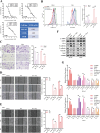Rotenone inhibited osteosarcoma metastasis by modulating ZO-2 expression and location via the ROS/Ca2+/AMPK pathway
- PMID: 40247635
- PMCID: PMC12010658
- DOI: 10.1080/13510002.2025.2493556
Rotenone inhibited osteosarcoma metastasis by modulating ZO-2 expression and location via the ROS/Ca2+/AMPK pathway
Abstract
Background: Pulmonary metastases in osteosarcoma (OS) are associated with a poor prognosis. Rotenone has shown anti-cancer activity. However, its effects on metastasis and the underlying mechanisms remain unknown. This study investigated the potential use of Rotenone for OS treatment.
Methods: The effect of Rotenone and ROS/Ca2+/AMPK/ZO-2 pathway on metastasis and EMT was evaluated by Western blot, Transwell and Wound healing. Flow cytometer was employed to measure the intracellular Ros and Ca2+ levels. The subcellular location of ZO-2 was detected by IF, interaction between AMPK and ZO-2 were examined by Co-IP. Then, subcutaneous tumor and metastasis models were used to evaluate the function of Rotenone in OS metastasis.
Results: Rotenone-induced ROS led to increased intracellular Ca2+, which promoted the EMT of OS cells through activation of AMPK and ZO-2 nuclear translocation. Inhibition of ROS production decreased intracellular Ca2+, restraining AMPK activity. Knock-down of ZO-2 significantly suppressed the anti-metastasis effects of Rotenone in OS cells. Moreover, Rotenone elevated p-AMPK and ZO-2 expression but inhibited EMT and lung metastasis in vivo.Conclusion These results provide evidence supporting an anti-metastatic effect of Rotenone. These findings support the use of Rotenone in the prevention of OS metastasis.
Keywords: AMPK; Ca2+; ROS; Rotenone; ZO-2; metastasis; osteosarcoma; translocation.
Conflict of interest statement
No potential conflict of interest was reported by the author(s).
Figures





References
MeSH terms
Substances
LinkOut - more resources
Full Text Sources
Other Literature Sources
Medical
Miscellaneous
